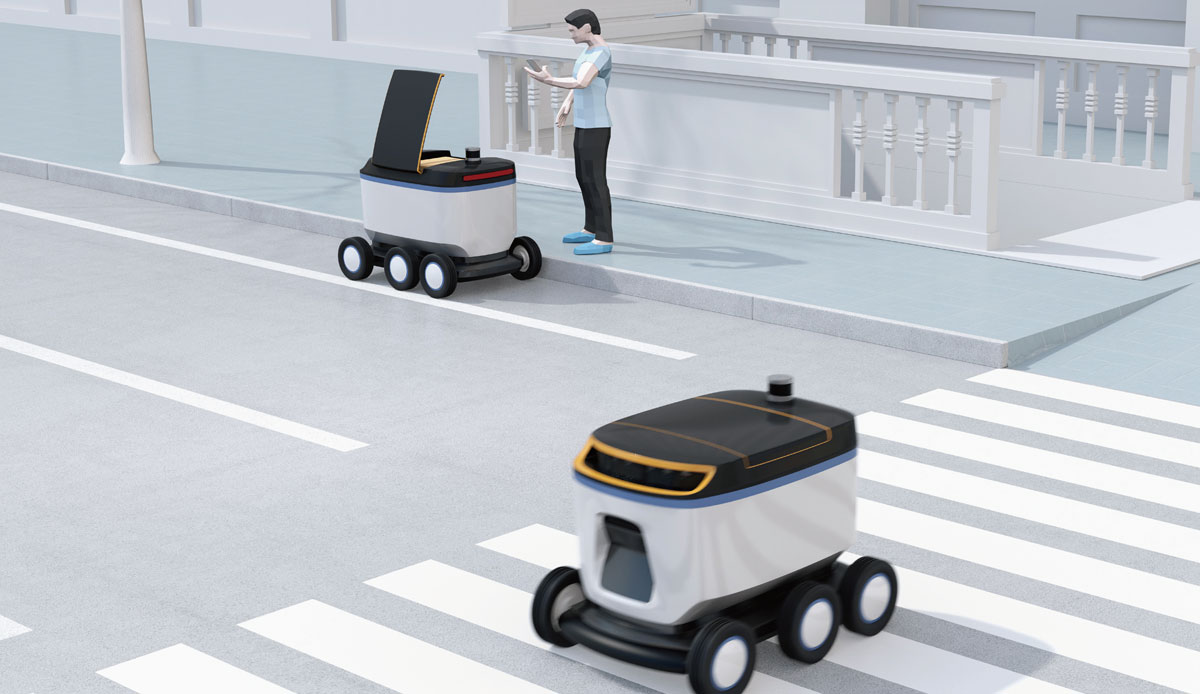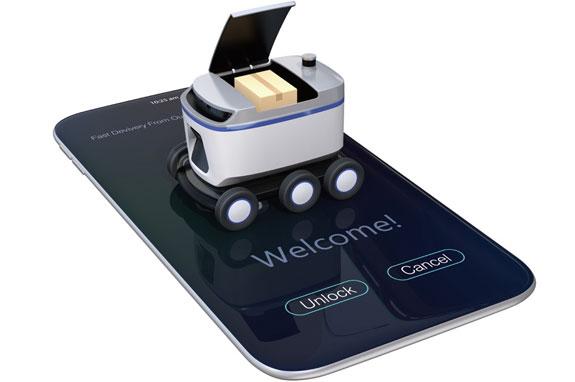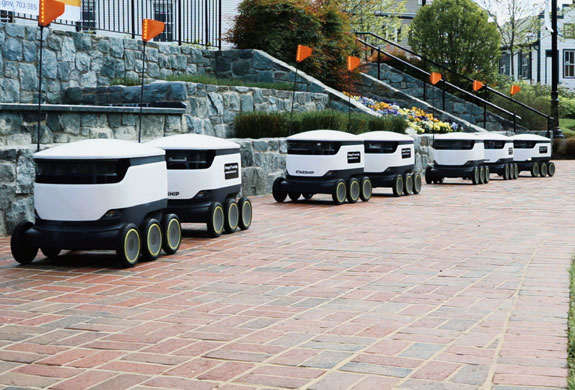Emergence of Delivery Robots,
When Will They Come to Us?
The delivery industry is changing rapidly in line with non-face-to-face logistics.
Accordingly, the industry is sending positive signs toward delivery robots.
News that they have emerged has been covered in newspaper headlines, but somehow they are not easily found.
So, when will delivery robots come our way?
Accordingly, the industry is sending positive signs toward delivery robots.
News that they have emerged has been covered in newspaper headlines, but somehow they are not easily found.
So, when will delivery robots come our way?

Delivery Robots Will Come Faster than we Expect
While some industries have collapsed due to changes in the industrial ecosystem paradigm set off by COVID-19, others have firmly established themselves as future industries. What is clear is that this change accelerated by COVID-19 will shoot further toward the future uninterrupted, even if the Coronavirus ends. Everyone is also curious about how the delivery industry, which has become entirely familiar in our daily lives, will evolve.
What is attracting the most attention in the changed future of the delivery industry are delivery robots, since they are an assembly of technologies that include all keywords of the 4th industrial revolution such as autonomous driving, robot technology, and Internet of Things (IoT) in the context of the contactless ecosystem. Moreover, delivery robots are eco-friendly as they mainly use electric batteries as a power source instead of carbon dioxide emitted by delivery motorcycles and trucks. In addition, they also contribute to reducing logistics costs such as labor costs for the delivery personnel.
In fact, delivery robots felt like a distant future for us, who were used to riders delivering by motorcycle before the pandemic. New food demand and companies looking for a medium to realize the 4th industrial revolution did not prioritize delivery robots either, considering various regulations and technical issues arising from commercialization.
However, the situation has changed completely as COVID-19 exploded demand for deliveries. Accordingly, many companies are now spurring research and development to speed up the commercialization of delivery robots that can kill two birds with one stone ─ positive demand; and next-generation technology.
Government Sets Out to Support with Temporary Deregulation
The government has also set out to offer support by temporarily easing regulations. Previously, delivery robots could not travel anywhere on the sidewalk or by car under the Road Traffic Act given concerns about various safety accidents. In addition, robots could not even enter parks, which were a sacred place for delivery under the Green Parks Act, if the weight of each robot was over 30kg.
However, the Woowa Brothers, a leader in the delivery industry, gained approval by the Ministry of Science and ICT for their delivery robots for a regulatory sandbox special empirical case, which is a system that exempts new products or services from regulations for certain conditions and periods to verify safety. This has allowed the Woowa Brothers to operate their own delivery robots on sidewalks and parks for the next two years.
It has especially become more encouraging to demonstrate door-to-door delivery, which is the core of commercialization, since not letting a delivery robot enter an apartment entrance and board an elevator will limit commercialization in Korea’s residential districts with many apartments. Such real operation data obtained over the two years has enabled the delivery robot to improve the technical feasibility and quality of service, and for the government to evaluate the impact of the delivery system.

Various Attempts being made to Accelerate Commercialization
Such atmosphere has spread further and even spurred firms not using delivery as the main service to become engaged in various research and development for commercialization of delivery robots. Various pilot demonstrations are in full swing abroad as well.
Amazon is operating Scout, a self-driving delivery robot in parts of California, Georgia, and Tennessee in the United States while continuing to expand operations. Scout is now delivering groceries and small parcels to their homes. Starship Technologies has partnered with food suppliers to deliver food and drinks to universities in each state using about 30 delivery robots.
Delivery robot pilots operating in the USA have a driving speed of a human walking speed and are accompanied by a supervisor, so no safety accidents have been reported so far.

Expectations to be Further Ahead of Concerns
Although the news is now spreading that the delivery robot is actually in operation, the robot technology is also rapidly advancing, and the demand for delivery is also showing steady growth; however, delivery motorcycles still occupying roads and streets cast a little doubt on whether delivery robots will truly come in the near future.
Even if delivery robots come in the near future, there still remain many issues ranging from a simple question of ‘Should delivery robots run on the road or sidewalk’ to many legal as well as institutional issues to be addressed such as ‘Who will take responsibility for casualties or property damage caused by a collision with pedestrians or vehicles?’ and ‘How to calculate the liability for damage or the percentage of negligence when delivery robots have an accident with each other.’ These are some reasons why various laws and institutional arrangements related to safety issues must be provided quickly.
It cannot be affirmed that the technical barriers will also be completely overcome because there is still a longer way to go than what has been achieved thus far to meet the required level of sensor technology and AI. Delivery robots must recognize and comply with road traffic regulations and detect pedestrians and moving objects such as cars and bicycles to operate without accidents. In addition, they must operate reliably even in harsh climatic conditions such as cold or heat waves and in bad weather with snow and rainfalls. There should be no errors despite all these variables, but will that be achieved fast?
Nonetheless, as history proves, the development of technology has been accelerated and advanced by demand. Over the past year, we have also seen first-hand how many things can change quickly. There are governmental support issues and demands of the times to consider as well. So let us put our concerns aside for a while and show patience by waiting a little longer. After the speed battle of the delivery robot is over, we will receive a reward that will solve the challenges facing the delivery industry at once ─ such as rising labor costs, riders’ various safety accidents, and an increase in carbon dioxide emissions.
Nonetheless, as history proves, the development of technology has been accelerated and advanced by demand. Over the past year, we have also seen first-hand how many things can change quickly. There are governmental support issues and demands of the times to consider as well. So let us put our concerns aside for a while and show patience by waiting a little longer. After the speed battle of the delivery robot is over, we will receive a reward that will solve the challenges facing the delivery industry at once ─ such as rising labor costs, riders’ various safety accidents, and an increase in carbon dioxide emissions.
2021.05.01

